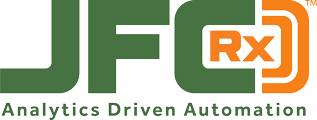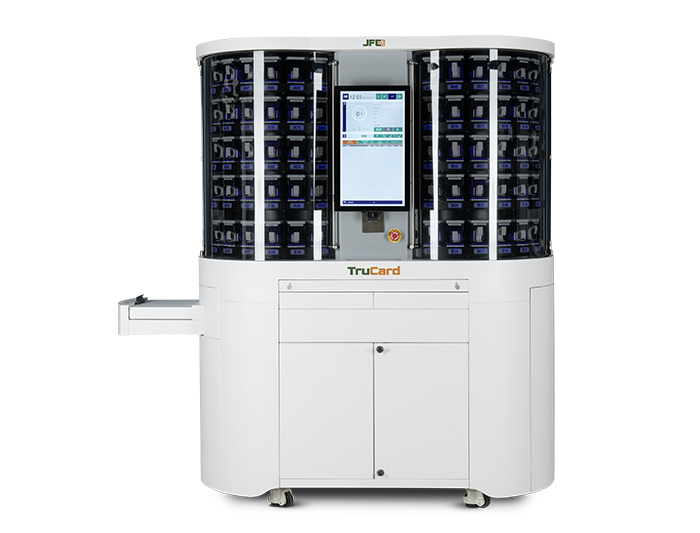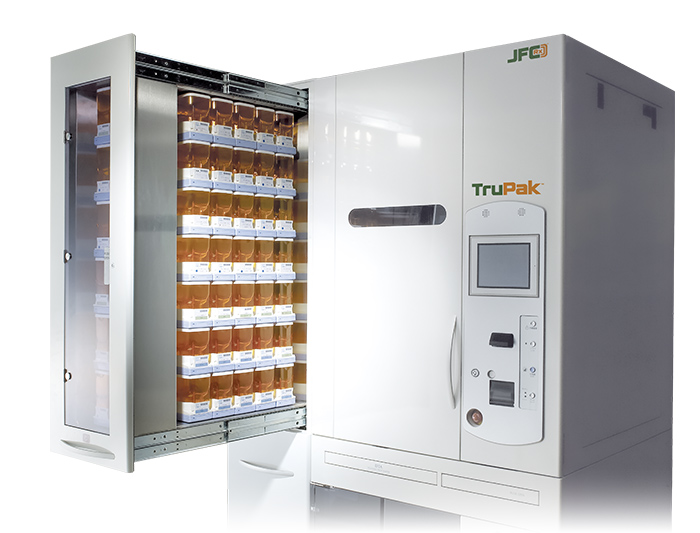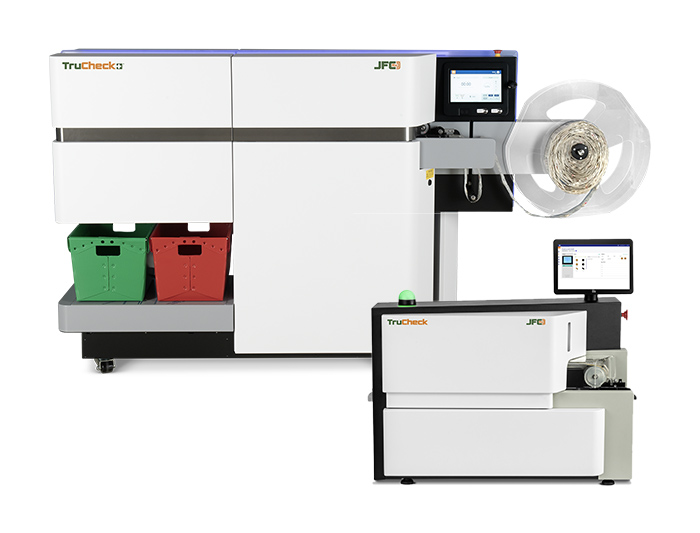A Long-Term Partner for Long-Term Care Pharmacies
Medication management within long-term care pharmacies is inherently complex, making accuracy, safety, and compliance vital. We work closely with long-term care pharmacies to implement automation-based workflows that simplify operations for efficiency, accuracy, profitability, and improved patient care.
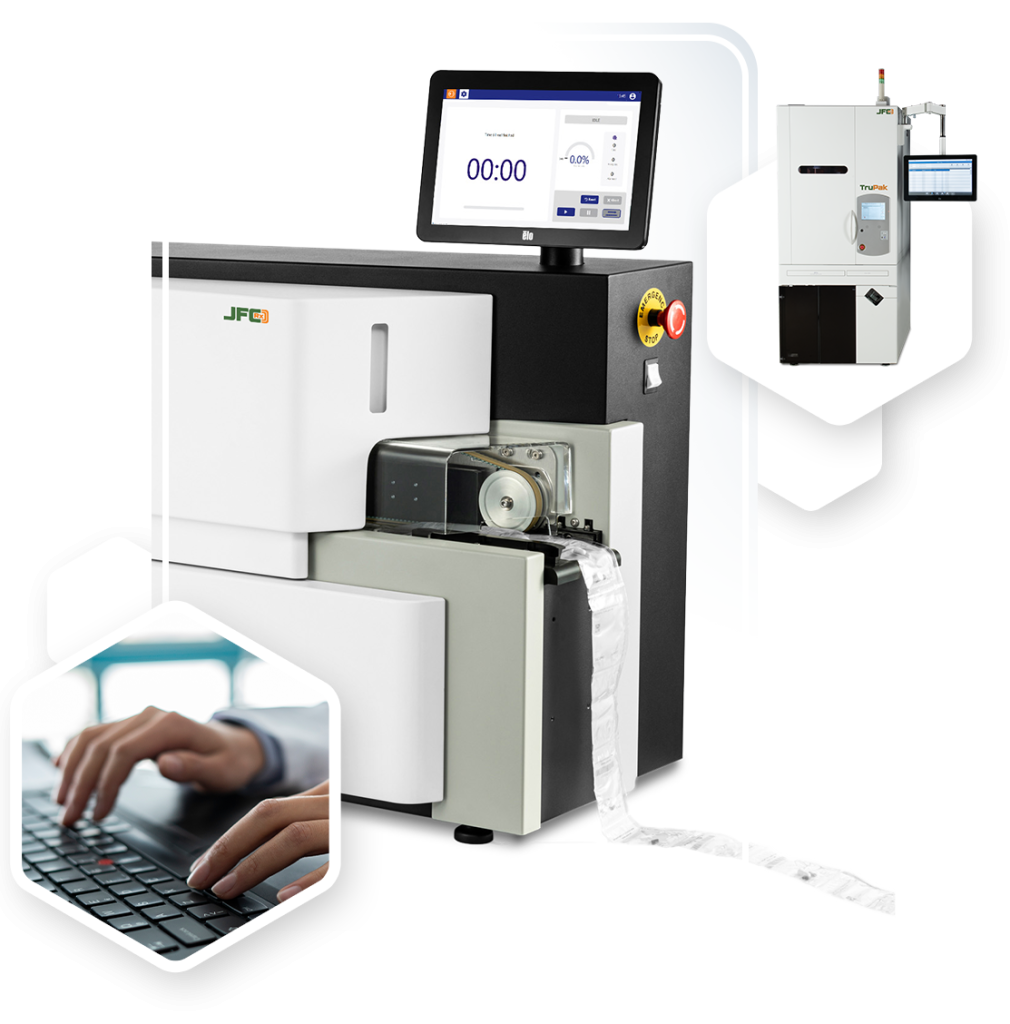
Solutions for Today’s Challenges
To meet the dual challenges of staffing shortages and lower reimbursement rates, long-term care pharmacies need automation equipment and workflow solutions to achieve operational goals while focusing on patient care. JFCRx delivers a range of scalable and efficient automation solutions, including:
- Multi-dose blister card packaging with built-in verification with TruCard
- Adherence pouch verification for product quality, accuracy, and traceability with TruCheck
- Tablet pouch packaging for improved safety and medication adherence with TruPak
- Easy, safe, and accurate automated vial filling with TruScript
A Partner Invested in Your Success
We strive to consistently deliver a higher level of customer service than anywhere else in the industry. By being your consultant and not just an equipment vendor, we are a long-term partner here to provide the proactive customer support you need. From prescription processing, dispensing, inventory management, returns, and disposal, we leverage data and automation to help you meet your goals. We have deep experience helping long-term care pharmacies not only improve workflows but also showing them how to use their automation equipment as a source of new revenue.

Machine downtime impacts production rates, which in turn negatively affects revenue and patient care. Inefficient production practices can also limit your pharmacy’s ability to grow. Through process assessments, we provide recommendations that improve efficiency and set you up for a cycle of continuous improvement.
The growth of our aging population has elevated the need for facilities that provide long-term care. Nearly two million seniors reside in long-term care facilities, and that number is growing as the population of adults older than 85 is expected to double by 2036 and triple by 2049 [source]. Without automation systems to serve this expanding need, your ability for growth is limited.
We provide insight into long-term care pharmacy operations through resolution-focused intelligence and dashboards. Our commitment to “analytics driven automation” means we leverage actionable data to build pharmacy workflows that create efficiency and new opportunities for revenue and growth.
What Our Customers Are Saying
How Can We Help?
TruCardTM is the industry’s premier automated multi-dose blister card packaging solution with integrated image verification. Designed to fit the needs of any pharmacy through flexible configurations and workflows, the TruCard line provides accurate and efficient workflows to fill and check blister cards automatically.
TruPakTM is the next evolution of adherence packaging and delivers labor-saving automated tablet pouch packaging for improved safety, efficiency, and medication adherence.
TruCheckTM provides adherence pouch verification for product quality, accuracy, and traceability. Efficient and accurate verification, review, and storage of adherence pouches is critical to any pharmacy operation. TruCheck streamlines production and minimizes timely manual checks while ensuring patient safety.
What are the benefits of pharmacy automation for long-term care facilities?
The median age of the American population is continuing a steady trajectory upward. And projections from the U.S. Department of Health and Human Services show nearly 70% of older adults will need long-term care (LTC) services at some point along their life journey. Long-term care pharmacies look at increasing the volume of medications required alongside a population that can use assistance adhering to medication schedules and dosage amounts. Long-term care pharmacy automation, particularly in on-site medication packaging and dispensing systems, supplies a valuable tool that directly addresses these needs. Benefits of long-term care pharmacy automation include:
One of the foremost benefits of pharmacy automation in LTC facilities is its ability to foster greater medication availability or access. Residents in long-term care can have complex medication regimens that require precise timing, dosing and explicit instructions. An automated system provides 24/7 access—an invaluable asset in case of emergencies or needs that fall outside of standard pharmacy hours. This helps contribute to uninterrupted patient care
When medications are packaged in bulk as is often the case in a LTC setting, waste is a common issue. Long-term care facility pharmacy automation is designed to dispense the precise amount of medication required. This cuts the risk of over- or under-dispensing, to help stem the tide of wasted medication. Reducing waste not only aids with cost savings, but it also aligns with broader sustainability goals for healthcare solutions.
Pharmacy automation optimizes the workflow within LTC facilities. Automation significantly reduces the time needed to prepare medications for administration to residents. Pharmacists and healthcare staff have more time to focus on clinical care and patient interactions instead of devoting hours to manual medication sorting and packaging. This enhances workflow efficiencies, better utilizes staff and offers the potential to raise the level of care provided to patients.
Pharmacy automation serves as a viable solution for the increased pressures of running a long-term care facility by facilitating on-site medication packaging and dispensing. Automation enhances medication availability, streamlines workflow efficiency and minimizes waste. These technological advancements provide a valuable tool to effectively manage and meet care expectations for an aging population.
Frequently Asked Questions
Multi-dose packaging is widely used in long-term care facilities to streamline medication administration and improve patient safety. It organizes residents’ medications into individual pouches or blister packs, typically sorted by administration time and date. This system helps nurses distribute medications more efficiently, reduces the risk of dosing errors, and simplifies medication management for residents with complex regimens.
Long-term care facilities can help increase medication adherence through several strategies. These include working with a pharmacy that has implemented multi-dose packaging systems, using medication reminders or alarms, educating residents and their families about the importance of adherence, regularly reviewing and simplifying medication regimens when possible, and employing technology like electronic medication administration records. Another important task is ensuring adequate staff training in proper medication administration and monitoring.
While often used interchangeably, medication adherence and compliance have subtle differences. Adherence refers to how well a patient follows their prescribed treatment plan, including taking medications as directed, following dietary restrictions, and making lifestyle changes. Compliance, on the other hand, traditionally implies a more passive role for the patient, simply following doctor’s orders. The term “adherence” is generally preferred as it acknowledges the patient’s active role in their treatment and suggests a collaborative relationship between patient and healthcare provider.
